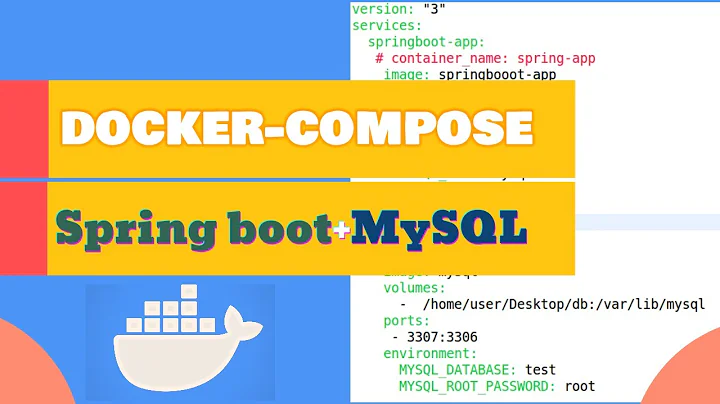User not created in MySQL when using docker-compose
Solution 1
How about:
docker-compose down -v
From the documentation:
-v- Remove volumes declared in the volumes section of the Compose file.
Your database has been already created inside a volume, so any changes of initial settings in docker-compose.yml won't be reflected.
In case you want to remove just a single volume, you may use docker volume ls to list all existing volumes and then docker volume rm <VOLUME NAME> to remove it.
Note: Bind mounts are not removed with the -v flag, so in case you are using them instead of volumes, you'll have to manually delete folders containing MySQL data.
Solution 2
Worked for me : stop docker and remove manually all the folder containing MySQL data from previous builds.
Also : don't forget to add a MYSQL_DATABASE environment var or it won't create the user you specified.
Solution 3
Important to note that the image entrypoint script will never make changes to an existing database. If you mount an existing data directory into var/lib/mysql, options like MYSQL_ROOT_PASSWORD will have no effect
Related videos on Youtube
James Black
I have been programming since I was in high school, and my favorite computer was my Amiga 2000, as that is what I learned to program in C on, and was just a great computer. I have been an advocate about unit testing since 1999, and believe we can get better code by getting before the user more frequently so we can narrow the solution to what they really want, as users don't really know what they want, initially. I am comfortable with many languages, but am trying to understand how to program in functional languages, giving up while loops is very difficult for me in designing applications. :)
Updated on October 09, 2022Comments
-
 James Black over 1 year
James Black over 1 yearThis is what I see when I am in the container created by docker-compose:
mysql> SELECT user FROM mysql.user; +------+ | user | +------+ | root | +------+ 1 row in set (0.00 sec) root@541e4d686184:/# echo $MYSQL_USER dbuserSo
dbuseris not present in the users table even though the$MYSQL_USERis set properly .In
docker-compose.ymlI have this:version: '2' services: db: image: mysql:latest environment: MYSQL_DATABASE: mydb MYSQL_USER: dbuser MYSQL_PASSWORD: userpass MYSQL_ROOT_PASSWORD: password ports: - "3306" volumes: - ./docker-entrypoint-initdb.d:/docker-entrypoint-initdb.d - my-datavolume:/var/lib/mysql volumes: my-datavolume:I expected
dbuserto be created automatically, but that didn't happen.I also have a
sqlfile to create my database and tables if they don't already exist, but right now tomcat can't connect to my database.Same symptoms as this question, but I am already using a dictionary for my usernames/passwords.
UPDATE:
I am getting close. When inside container I manually did:
/docker-entrypoint-initdb.d/create_users.shThen the user was created inside
MySQLtable and I was able to deploy my application to mytomcatserver and I didn't get an error aboutdbuserbeing denied access.So, why did I have to run this command myself, it should be run by docker-compose, according to the mysql docker docs under Initializing a fresh instance.
-
 Vladimir Zotov about 5 yearsGreat suggestion. Saved my day! Use docker-compose down -v docker-compose up --build to rebuild image
Vladimir Zotov about 5 yearsGreat suggestion. Saved my day! Use docker-compose down -v docker-compose up --build to rebuild image -
XtraSimplicity over 4 yearsNote: Bind mounts aren't removed with the
-vflag, so you'll have to manually delete the mount's contents. This caught me off guard for far longer than I'd like to admit.. -
Luis Milanese over 4 yearsAfter hours of struggle, I'm glad I came across your answer! Many thanks.
-
Brandon Ros about 3 yearsHow do you mount a volume for persistent storage then?...








